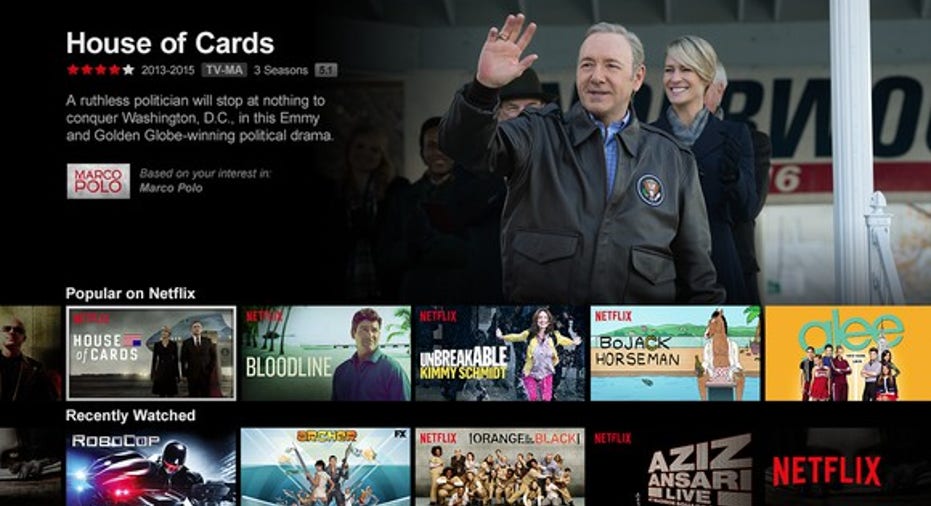Does It Make Sense to Ditch Cable for Netflix?

The idea of swapping a monthly bill that tops $100 for many American households for a service that costs $9.99 a month has an obvious appeal.
Even though cable bills have been rising on a yearly basis, consumers aren't cutting the cord to replace their pricey pay-television service with Netflix or any other streaming service. The average cable bill came in at $123 in 2015, according to data from NPD Group, up from $86 in 2011, and in spite of this huge increase consumers have not widely rebelled against the industry.
Cord-cutting, which has been lauded as an impending exodus from the cable companies, seems not to be materializing. The major cable providers, covering roughly 95 million customers, lost only 105,000 subscribers in 2013,125,000 in 2014, and 385,000 last year, according to numbers from Leichtman Research Group (LRG). Comcast , the largest cable company, lost only 36,000 subscribers in 2015 and gained 58,000 in Q1 of 2016.
These numbers heavily suggest that even though cord-cutting would save people a lot of money, it's not something most people are willing to do. Given the major difference in price between pay-TV providers and sites such as Netflix, it's worth at least considering whether dropping cable makes sense.
Netflix has a lot of programming, but maybe not enough to make it a solo substitute for cable. Image source: Netflix.
What would you be giving up?
The average American over the age of 2 watches around five hours of television a day, or about 34 hours each week. Technically there are more than enough hours of programming on Netflix to fill the 1,768 hours of television-watching each person currently consumes annually.
Of course, people don't simply watch television -- they watch shows they enjoy. So it's not just a numbers game for the streaming service. Dropping cable for Netflix means giving up live programming, news, sports, and most of the top shows on broadcast or cable. In exchange, consumers get access to a library of movies, some older television shows, and the streaming leader's roster of original programming.
Netflix has roughly 50 ongoing original shows of varying lengths split across children's programming, all-ages, and adult shows. Assume half of those are 30-minute programs and half are 60, with an average of 12 episodes per season, and you have 600 episodes to watch, or roughly 450 hours of programming. Add in original documentaries, movies, and comedy specials, and you get maybe another 100 hours. Factor in the nearly 60 new shows the company has in the works, and that's another 540 hours.
Using that rough math, assuming you're just as happy watching episodes of the Care Bears cartoon as you are watching House of Cards, you would have about 1090 hours of original to watch. Being realistic and saying that the average person would be interested in only half of the shows (a generous estimate), you're looking at 545 hours, leaving 1,200 or so hours to fill for the average American.
The Netflix archive will fill some of that, but many of those are programs people may have already seen, and the streaming company has been devoting fewer resources to licensing content now that it has stepped up spending on originals. Of course these numbers are very raw, put together by rough counts and estimates, but Netflix still comes up short as a sole alternative to cable.
It's an impressive service with lots of great programs, but on its own it can't replace a cable universe that offers hundreds of channels. But while Netflix alone may not quite get the job done, there are some easy and cheap ways to supplement your $9.99 subscription to make dropping cable a smart choice.
How to cut the cord and still have enough to watch
Netflix on its own simply doesn't offer enough programming hours for the average American to ditch Comcast or any other cable provider. But if a cord-cutter were to add an HDTV antenna, in most markets he or she would have access to all of the major broadcast networks as well as some other channels (it varies depending on where you live, with high-population areas generally having more free over-the-air stations). An HDTV antenna costs under $30, and it's even possible to pair one with a third-party DVR to add cable-like functionality.
If a consumer wants to stay purely digital, the best bet is pairing Netflix ($9.99) with Hulu ($8.99). That won't replace the live news and sports the networks offer (which can be had with an HDTV antenna), but it will bring more originals and new shows from partners. That includes shows from Comcast's NBC network and its cable stations, including USA, as well as Fox, CBS, and the CW, among others. That's $18.98 a month, versus $123 and rising, for more than enough shows to fill your five-hour-a-day hole.
Netflix on its own may not make sense for cord-cutters, but Netflix plus Hulu, Netflix plus an HDTV antenna, or even all three most certainly do.
The article Does It Make Sense to Ditch Cable for Netflix? originally appeared on Fool.com.
Daniel Kline has no position in any stocks mentioned. The Motley Fool owns shares of and recommends Netflix. Try any of our Foolish newsletter services free for 30 days. We Fools may not all hold the same opinions, but we all believe that considering a diverse range of insights makes us better investors. The Motley Fool has a disclosure policy.
Copyright 1995 - 2016 The Motley Fool, LLC. All rights reserved. The Motley Fool has a disclosure policy.



















